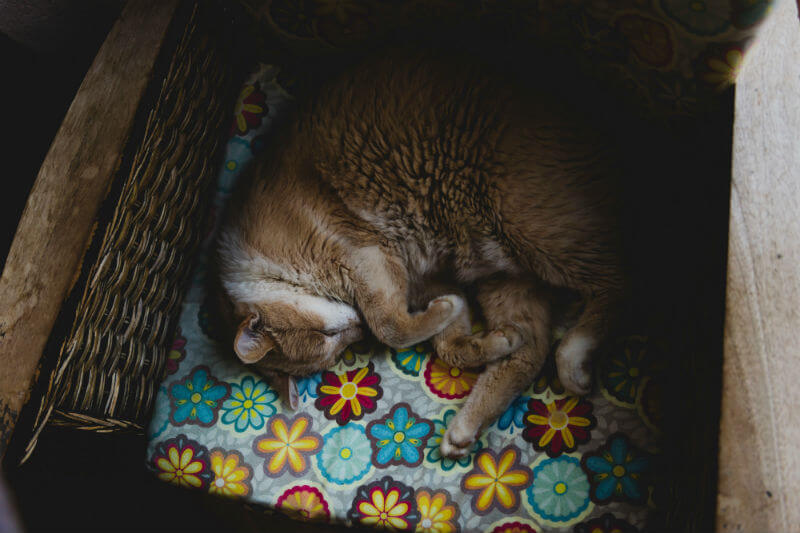Putting a Cat to Sleep: Everything You Need to Know

Putting a Cat to Sleep: Everything You Need to Know. Putting a cat to sleep is a heartbreaking and deeply personal decision. On one side, you know that you are going to be facing a personal world of grief at their loss. On the other, you know that they are suffering pain every minute of their life…
It’s usually only the knowledge that a peaceful end to their pain is a better and kinder option that will prompt you, as a pet owner and animal lover, to even consider the following kinds of questions about cat euthanasia:
What are the most common signs that my cat is in distress?
Because cats usually try to conceal any signs that they are suffering – a holdover from times when they faced predators who might exploit their weakness – it can sometimes be difficult to know when they are truly in pain.
Your familiarity with them, their personality and their habits will be your best guide here. The signs which are easiest to spot will be changes to their routine, for example, if they:
- Start eating less or more
- Show dramatic changes in temperament
- Change the amount they sleep or want to go outside
- Are far less or far more vocal than usual
- If you suspect your cat might be sick or injured in any way, it’s always a good idea to consult your vet.
Why would I put a cat to sleep?
For most people, cat euthanasia only starts to become an option they would even think about when it becomes clear their pet is suffering so much that they cannot enjoy any quality of life. The most common reason for this is advanced aged, where serious illnesses tend to start affecting domesticated felines. Many of these illnesses have no cure and can mean serious ongoing pain for your pet.
That said, a cat can live for around 20 years and, with good veterinary care, will stay fit and healthy for most of that time. Even after a diagnosis of chronic illness, your cat may still be able to live a good quality of life.
In all cases, it is best to consult a vet to examine and diagnose your cat before you start thinking too far ahead.
Putting a Cat to Sleep: Everything You Need to Know to Make the Decision
Unless your cat has been in a serious accident, it’s always best to take a little time to think things through. Your first port of call should always be to consult your vet and listen carefully to their opinion and the information they give to you.
Secondly, you should talk it through with your family and friends. Children, in particular, may have a difficult time understanding why choosing to let your cat go can be a kinder decision. By talking about it with them first you can help them to understand the reasons why this is the better choice if that is what you have decided.
The final decision will be down to you. Most people find it helpful to think about what would be best for their pet and the quality of life which they can expect in the future.
How does putting a cat to sleep work?
You will rarely find a vet who uses anything other than the following method to put a cat to sleep:
- A little injection of anaesthetic sedates your cat and puts them into a state of unconsciousness (this is sometimes unnecessary if your pet is already calm and unlikely to become distressed)
- A small overdose of anaesthetic lets your cat gently drift away
- It normally only takes a few seconds
- It is entirely painless
Does it hurt?
The above method causes your cat no pain and is completely free from stress. The only discomfort might be caused by the initial injection. This small pinprick of pain is just the same as they felt the last time you took them to get their shots.
Cat euthanasia at home or in surgery?
Of course, this decision is completely down to you. You should do whatever you feel is best for your cat. They are your companion, your friend and a member of your family.
It’s always best to think of what the experience will be like for them – and for you. Many people prefer the option of having a vet come to their home because it means reduced travel, no need to force your cat into a container for the journey and no need to disturb your pet if they are resting as comfortably as they can.
Others having longstanding relationships with their local vets which can make the distressing sounds of other animals in pain plus the transportation appear worth it if you think that your vet’s presence might make your cat more relaxed. Of course, if you have a caring home visit vet who your cat is also familiar with, this is the best of both worlds.
Should I stay or should I go?
Again, this will be a deeply personal decision for you to make. However, you must always bear in mind that your cat will be affected by your distress. So, if you fear that you may not be able to remain calm and supportive to help them throughout the procedure, it may be best to decide to remain outside of the room. Any loud sobbing or other perfectly natural indications of grief and loss may serve to upset your pet too.
Armed with this knowledge, many people decide to stay in the room – and many others decide to wait outside. Whichever you choose, you should know that it is a completely normal choice to have made and one that has been chosen by many other animal lovers before you.
What happens afterwards?
After putting a cat to sleep you will have just one more small decision to make. Most vets will be able to provide pet cremation and some will be able to return the ashes to you. Check to make sure that this a something your vet will be able to do if you want it..
You can also choose home burial, though you will need to check with your local council first. In some areas this is not allowed or will require you to get permission.
How do I move on?
Like everything involved in saying goodbye to a family ember, this will be a process which is personal to you.
Try and think of the happy times how much happier their life was with you in it. Remember – you shared each others’ lives for a long time, something which enlivened and enriched you both.
Putting a Cat to Sleep: Everything You Need to Know.

Cloud 9
To ensure accuracy, a professional vet has reviewed and verified the information presented in this article. It is important to note that when it comes to making decisions about euthanasia for your pet, there are no easy answers. It is always recommended to seek advice from your own veterinarian before making any decision.


